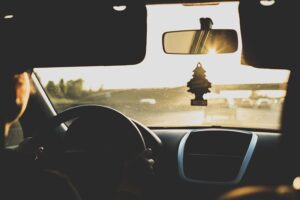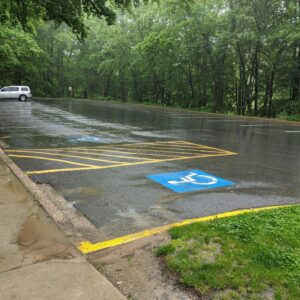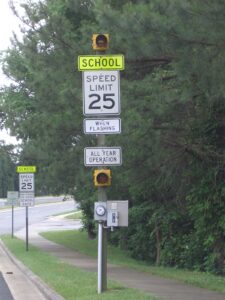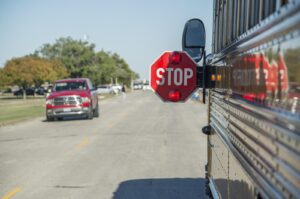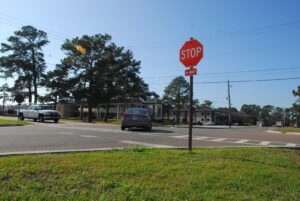Traffic Checks While Driving
Written By | Doreen Almirol | 20+ years CA DMV Licensed Driving Instructor |
Driving on today’s busy roads demands not only skill but also a high level of awareness. One key aspect of safe driving is performing regular traffic checks. These checks help drivers stay aware of their surroundings, anticipate potential hazards, and make informed decisions. Traffic checks should be performed continuously while driving to ensure your safety and the safety of others on the road. So, when exactly should you perform traffic checks? Let’s dive in.
This blog may contain affiliate links, and if you make a purchase through these links, we may or may not earn a commission at no extra cost to you.
1 | Traffic Check BEFORE STARTING Your Vehicle
Before you even turn the ignition key, it’s crucial to check around your entire vehicle. Look for obstacles, people, pets, or any other potential hazard. This initial check can prevent accidents even before you start moving.
2 | Traffic Check When CHANGING LANES
Changing lanes is a common maneuver but also a frequent cause of accidents. Always perform a traffic check by using your mirrors and checking your blind spots. Always conduct a shoulder check before changing lanes or entering a turning lane. This involves turning your head 90° in the direction you’re moving to check your blind spots. Even if you frequently check your mirrors, adding a shoulder check provides an extra layer of certainty. This ensures the lane you are moving into is clear and that you are not cutting off another driver.
RELATED ARTICLES :
Making Lane Changes
Blind Spots and Shoulder Checks
3 | Traffic Checks At INTERSECTIONS
Intersections are hot spots for collisions and that’s why traffic checks are vital, especially at all-way stops, 2-way stops, and T-intersections. The process generally includes a sequence of looking left, right, and then left again. This practice helps in determining the right of way and spotting any potential hazards like pedestrians, cyclists, or oncoming traffic.
RELATED ARTICLE:
Right of Way Rules at Intersections
4 | Traffic Check On MAJOR STREETS and HEAVY TRAFFIC
When turning onto a major street, it’s crucial to perform multiple traffic checks. This is especially important for left turns where you have to cross multiple lanes of traffic. Remember, each situation may require different levels of vigilance based on the complexity of the intersection and the volume of traffic. Take caution when enterin in heavy traffic, it can be unpredictable. Regularly scan the area in front of you, your rear-view mirror, and side mirrors to stay aware of the flow of traffic and anticipate any sudden stops or changes.
LEARN MORE:
Managing Your Space with SIPDE
5 | Traffic Check Before & After PARKING
When entering or leaving a parking spot, traffic checks are crucial. Be aware of pedestrians, shopping carts, and other vehicles. This is especially important in crowded parking lots where visibility may be limited. BONUS TIP: Keep speed very slow, match your speed with pedstrians walking pace, usually this is about 4-5mph.
RELATED ARTICLES: Parking
6 | Traffic Checks on HIGHWAYS & FREEWAYS
High-speed driving, like on highways and freeways, requires constant vigilance. Keep checking your mirrors every 5-8 seconds to be aware of vehicles entering or exiting the highway, and those that may be speeding up or slowing down around you.
RELATED ARTICLES: Safe Spacing
7 | Traffic Checks In SCHOOL ZONES and RESIDENTIAL AREAS
School Zones and residential areas are high-risk due to the presence of children and pets. Perform frequent checks, especially during times when children are likely to be present, like school start and end times, morning and afternoons on the weekdays. Always yield to pedestrians and be mindful of school buses, especially in residential areas. Pedestrians have the right of way, and it’s illegal to pass a stopped school bus with flashing red lights as children may be crossing the street.
8 | Traffic Checks Before Making TURNS
When making turns at intersections or onto different roads, it’s crucial to conduct thorough checks for safety before entering a turning lane or completing a turn. Begin by using your rearview mirror to evaluate the traffic behind you. Then, check your side mirrors to identify any vehicles approaching from behind. To ensure complete awareness, perform a shoulder check to verify that there are no vehicles, bicyclists, or pedestrians lurking in your blind spots. Only proceed with entering the turning lane or completing your turn once you are certain that the lane or intersection is clear of traffic and pedestrians, prioritizing safety at all times.
Regular traffic checks are a fundamental part of safe driving. They help you stay aware of your surroundings, anticipate potential hazards, and react in time to avoid accidents. Remember, safe driving is not just about following the rules, but also about being proactive and vigilant on the road. Happy and safe driving!




